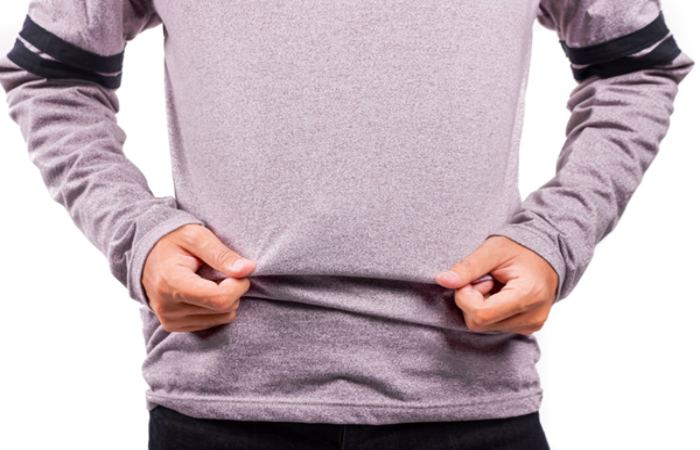Surgery can turn simple, everyday tasks that you never thought of before into an obstacle course. Getting dressed is one of the main tasks that can become completely daunting after surgery. Seams and zippers that you never noticed before are suddenly unbearable. So how can you shop for your post-surgery wardrobe? Here are seven tips to keep in mind:
Table of Contents
Consider the type of surgery you will be having.
Different types of surgery will affect your mobility differently. Hand surgery will compromise your ability to work zippers, while hip surgery can make it tough to bend over. Think about what type of surgery you will be having and what the short-term and long-term recovery will look like, both in terms of swelling and mobility. Keep in mind that surgery can cause swelling and other side effects in areas of the body that aren’t necessarily right next to the incision site. For instance, swelling in the hands and feet is common after surgery even if the procedure did not take place on the lower body, so bear that in mind when planning out what you will be wearing right after surgery.
Evaluate your current closet
Go through your current closet and see if you currently own any garments that might work for your post-surgery recovery period. Odds are that you will have at least a few soft, stretchy pieces that will work for the days and weeks following your surgery. Practice putting these garments on to make sure they will actually work — so if you won’t have the use of one of your hands, then practice getting dressed one-handed. Use this test to figure out what gaps you have in your wardrobe and what kinds of post-surgical clothing that you need to purchase.
Put being comfortable above all else
Just because you’re no longer obligated to wear a hospital gown doesn’t mean that post-surgery is the time to worry about looking cute. You won’t care what your physical appearance looks like if your waistband is pressing on your incision site and causing you pain. In the days and weeks following your surgery, focus on being comfortable and causing the least irritation possible to the surgical site. You can wear the softest sweats that you want as long as it relieves your discomfort. Keep in mind that the faster you heal, the sooner you can start wearing your regular wardrobe full-time again, so focus on getting better for now.

Embrace stretchy fabrics
Stretchy fabrics are ideal for the post-surgery period (and really any time). Because of the give in the fabric, these garments can accommodate the sometimes rapid change in size that can come from swelling and shrinking post-surgery. These fabrics also move with you as you walk or bend over, so they won’t cause chafing or scratching. If you can’t test the fabric in person — for instance, if you’re shopping online — then check the label and look for materials such as spandex, elastane and lycra. Just a few percent of one of these materials will make a huge difference in how much stretch the fabric provides and how comfortable it is.
Look for adaptive closures
Closures can be tricky to work even at the best of times, and this is definitely true after surgery when your hands may be limited by swelling or other side effects. Consider other closures that are easier to work, such as zippers, Velcro and even magnetic closures. Many types of adaptive clothing are made with exactly these types of thoughtful closures to make it easy for people with a variety of health issues to get dressed, including those who are recovering from surgery. If you’d rather skip closures altogether, and you’ll have enough mobility in your upper body, then you can consider pull-on or pull-over styles as well. Keep in mind that you might need to size up in a pull-over style so that the neckhole and armhole will be large enough that you can get the garment on and off without too much trouble.
Avoid seams and tight waistbands
Many seams and waistbands don’t stretch, so even if the rest of the garment feels comfortable, these elements can be a dealbreaker. Look for seamless garments if possible, or clothes that eliminate seams, especially in areas that receive a lot of pressure (such as the back or the bottom). Seek out elastic waistbands that will stretch to accommodate any bloating or swelling. Try to avoid hardware such as buttons, snaps and zippers that will put pressure directly on your skin. Make sure not to let seams or a waistband rest on or around the incision site, which can cause irritation and pressure.
Don’t forget the rest of your outfit
Clothes aren’t the only parts of getting dressed that you need to think about. Shoes, socks and other accessories are also important parts of your recovery process. For instance, your doctor might recommend that you wear compression socks after your procedure to remedy lower body swelling. You might also need to purchase shoes for swollen feet in a larger size, or get a long-handled shoe horn if you won’t be able to bend over to put on your shoes. Thinking through every aspect of getting dressed ahead of time will make it much easier to clothe yourself after your surgery.
Now you know what to avoid — and what to seek out — when you are shopping for post-surgery clothes. Keep these tips in mind and you will know how to choose garments that will help aid in your recovery instead of hampering it.






